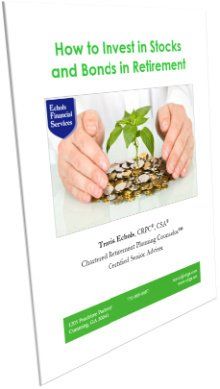Important Rules When Inheriting Money from a Parent

Making big financial decisions immediately following the death of a close family member can be dangerous. It is often best to allow some time before tackling big financial decisions. On the other hand, some people find getting immersed in the finances is helpful in coping with the loss. Whatever way is best for you, you will need to give it your
careful attention to avoid big financial mistakes. The different types of accounts have different rules. I'll address the most common types. In the case of the death of a parent or anyone other than your spouse in which you are a non-spouse beneficiary, there are many rules that you must know to make the best decision for you and your family. (In this article, I use the common parent-child inheritance, but the planning strategies can apply to other non-spouse situations.) Your decisions can have major tax and investment consequences, both now and in the future. And some of these decisions have time deadlines keyed to your parent’s date of death. Also, some of these decisions are irreversible. You can download my free Estate Planning Survivor Checklist here
.
So, you don’t want to rush in and make decisions without knowing the rules, and you don’t want to wait too long and be stuck with fewer options. (In this article, I am not addressing estate taxes. As of 2021, only estates valued at $11.70 million or more are subject to federal estate tax. But there are plenty of other tax pitfalls to navigate around. I am also going to focus on liquid savings like investment and retirement accounts, versus real estate which will be for another time.) Sign up to receive my free monthly email articles on retirement planning--no cost, no obligation
.
|
Inheriting Cash and Non-Retirement Accounts

For cash and non-retirement accounts you inherit, the biggest potential tax problem is not going to be income taxes associated with the transfer of the assets to you; rather, it is capital gains taxes when you sell the assets.
As I mentioned earlier, most taxpayers will not be subject to a Federal estate tax liability, but the estate and/or beneficiaries can have big Federal income tax liabilities that can be reduced with good planning. So, cost basis management is critical in maximizing the step-up in basis, as well as minimizing the loss of any unrealized and/or carryforward capital losses. See more on preserving capital losses here.
Currently, at death, there is a step-up in the cost basis of the securities in the account, which means the capital gains your parent had are essentially wiped away at their death and the gain/loss calculation starts over with the fair market value of your parent’s investments at his/her date of death.
If you continue to hold your parent’s investments, and there is a big gain after they die, selling a stock within a year or less will count as short-term gains on your tax return, which is the same as ordinary income rates, which is higher than long-term capital gains rates.
This is something to explore carefully before deciding to sell or hold your parent’s investments. All of your share of your parent’s taxable accounts (if they have more than one account) could theoretically be transferred into one taxable account in your own name. No special accounts need to be opened because of inheriting the assets.
The cost basis information is typically transferred to the account in your name. Afterwards, interest and dividend income, and gain/loss data, is recorded and reported via a 1099 each year. This also could present a tax problem for you that you'll need to address.
Inheriting after-tax monies can create many tax planning opportunities for you such as paying taxes and/or living off those monies while you do strategic Roth conversions in lower tax years. People with too little after-tax monies often struggle to be able to implement these strategies.
If your parent had a Pay on Death or Transfer on Death on the account, the assets could transfer immediately to the beneficiaries and avoid probate. This is an easy way for your parent to save you time and money in their estate disposition process.
(I am assuming that the assets are not in a trust, which I am not addressing here.)
Inheriting Tax-Deferred Accounts like IRAs and 401ks

The SECURE (“Setting Every Community Up for Retirement Enhancement”) Act was signed into law in December 2019 as part of the 2020 federal budget. This law virtually killed the lifetime tax-deferred IRA stretch for non-spouse beneficiaries (like children), except for a few cases.
- Minor child of account holder
- Disabled beneficiary
- Chronically ill individual
- Individual who is less than 10 years younger than account holder
Otherwise, non-designated beneficiaries like estates, charities and nonqualified trusts have 5 years to distribute the assets. All other designated beneficiaries must take distributions within a maximum 10-year period.
Read more about the death of the stretch IRA here.
Unfortunately, ten years is shorter than the normal life expectancy; but the one good part of the new rule is there are no minimum distribution requirement each year.
The new law just requires that the beneficiary IRA monies be distributed by the end of the 10-year period--or else huge penalties will be levied (on top of the taxes in the case of traditional pre-tax IRAs). Compared to the stretch option before the SECURE Act, IRA and 401k monies now have a shorter period to defer taxes and spread the tax burden.
If you are close to retirement when you inherit a big IRA
from your parent, you might delay Social Security while you
take heavier beneficiary IRA distributions in the gap years between retirement (when you stop working full time) and your larger and later Social Security payments (due to delaying). You are looking to
flatten the tax curve to avoid big income spikes or gradual creep into the higher marginal
brackets.
If the inherited retirement account is big enough, it could tempt you to retire a few years early to pursue other endeavors while taking distributions at a lower tax rate.
If you are in your peak income-earning years with no desire or plans to retire within ten years, you may want to spread the distributions more evenly over the ten years (it could be 11 tax years if timed properly) to flatten your tax curve.
If you are already retired and past “full retirement age” as deemed by Social Security, you may consider suspending your Social Security to take higher distributions from your inherited IRA. This would kill two birds with one stone: lowering your lifetime taxes while getting delayed Social Security credits, thus increasing your Social Security income 8%/year up to age 70. See “How to Maximize you Social Security Income”.
The goal is to figure out the best way to minimize your lifetime taxes and maximize your income/assets. This requires projecting your income and tax liability over your entire retirement. See more on tax planning .
For IRAs, there are IRS letter rulings that allow IRAs with no named beneficiaries (i.e., if your parent did not name any beneficiaries on his/her IRA) to continue to be stretched by you (the beneficiary) using your parent’s (the decedent’s) Required Minimum Distribution (RMD) schedule versus the 10-year rule. Some IRA custodians, however, may not be cooperative in helping you implement this. But for parents that die in their 70s, this RMD schedule can extend the tax deferral longer than 10 years. See Michelle Ward’s article here.
As for the mechanics, you need to establish an individual beneficiary IRA linked to your parent and so titled. While you can usually combine your mom’s IRA assets into one beneficiary IRA linked to your mom, make sure you don’t combine your different parents’ IRA monies in the same beneficiary IRA account. Each parent's monies need a separate beneficiary account linked to that parent. You also need to make sure the inherited IRA monies do not get transferred into your own non-beneficiary IRAs. The 10-year rule (or RMD schedule) will be based on each parent's date of death.
Note: The benefit of deferring taxes is that you get compounded growth on the money you would have paid in taxes each year. It is especially beneficial if you are in a higher tax bracket now (due to high earned income, for example) than you will likely be in retirement or during the gap years between retirement and the beginning of Social Security and/or RMDs on your own retirement accounts.
Also, with inherited Roth IRA
s, there are no taxes upon distribution, but there is now a shorter time to enjoy the tax-free growth. So, the best strategy for inherited Roth IRAs will be, in most cases, to take no Roth IRA distributions until just before the end of the 10-year period, and then take one big distribution to empty the account.
Inheriting Insurance Annuities

Nonqualified annuities are annuities that are not in retirement accounts like IRAs.(IRA inheritance rules apply to annuities within IRAs).
Nonqualified annuities are tax deferred and at death will normally have Income with Respect to the Decedent (IRD) taxes to manage. The cost basis (typically the initial investment) is not "stepped up" as are securities in individual taxable accounts. These assets are treated differently than IRAs and taxable accounts.
Fortunately, however, nonqualified annuities were not included in the SECURE Act’s stretch-killing laws, so you may be able to continue the annuity’s tax deferral (with the same insurance company and/or product or do a 1035 tax-free exchange to another insurance company and product) and stretch the tax deferral over your lifetime with an RMD schedule based on your life expectancy.
The RMD schedule is based on your age and requires an ever-increasing percentage to be distributed and reported as ordinary income each year until the assets are depleted.
To take advantage of this extended tax-deferral and the "spreading out" of annual taxable income distributions, a separate annuity policy needs to be established in your name and linked to your parent who owned the original annuity. The cost basis of your parent would be transferred to your annuity (or rather your proportionate share of the cost basis based on your beneficiary share).
If you choose the lifetime stretch, the first RMD is due within a year of the date of death. There is 50% penalty on missed RMDs, so they should be automated if possible, to ensure they are not overlooked.
Other options are available other than the lifetime stretch. However, if you face a high IRD, a lump sum distribution or even 5-year payout could push you into high tax rates. In such cases, the lifetime stretch gives you the option to stretch the deferral, flatten your tax curve, all the while being able to take bigger distributions in low tax years. The stretch option for high IRD inherited assets will usually give you maximum flexibility.
For more on how nonqualified annuities are taxed, see my article, Are Annuities a Good Investment? The Good , the Bad, and the Ugly .
Five Key Takeaways When Inheriting Money from a Parent
1. If you have recently inherited your parent’s
investments, be sure to know all the rules and all your options before making
decisions about their accounts. The rules are complex, and the IRS is typically
unforgiving if you make mistakes. Also, don’t miss RMD deadlines or transfer deadlines, like the
one-year deadline many companies require…or you could get killed in penalties and/or extra taxes you could have avoided.
2. Make your decisions in the context of your own customized financial plan, based on your goals and situation. Even if you know all the rules and options available to you, it may be impossible to choose the best course for you without a financial plan that includes a 10-to-20-year tax projection.
3. If your parents are still alive, explore helping them develop a financial plan that includes estate and tax planning. Your parents’ hard-earned wealth can go to entities they didn’t desire and/or complicate your life greatly if they make mistakes like: a) missing or not updating out-of-date beneficiaries on accounts and policies, b) having no “Transfer/Pay on Death” for bank and taxable investment accounts, c) having big unrealized capital losses that will be stepped down and lost, d) scattered, unconsolidated, and uncoordinated accounts in different places for no good reason, etc.)
4. Plan your own wealth transfer legacy for your children with these realities in mind. Involve them in the process as much as possible. Also, knowing your children's tax situations can help you bequeath your investments in a more tax-efficient way.
5. Unless you are one of the few individuals who love to geek out in researching and implementing these complex strategies, hire an advisor. Be sure to find an advisor who specializes in tax planning (which greatly narrows the field). If you are not willing to do the research, then don’t be penny wise and pound foolish, trying to save a small portion of what you can potentially lose by winging it. Even if you can do it yourself, your spouse or children could be lost and taken advantage of if something happened to you. The value of a great advisor far outweighs the price.


Travis Echols , CRPC®, CSA
Receive free Social Security Guide by email




Investment Advisory Services offered through JT Stratford, LLC. JT Stratford, LLC and Echols Financial Services, LLC are separate entities.











